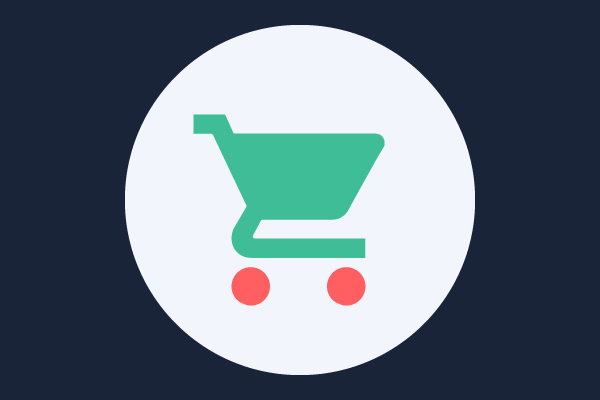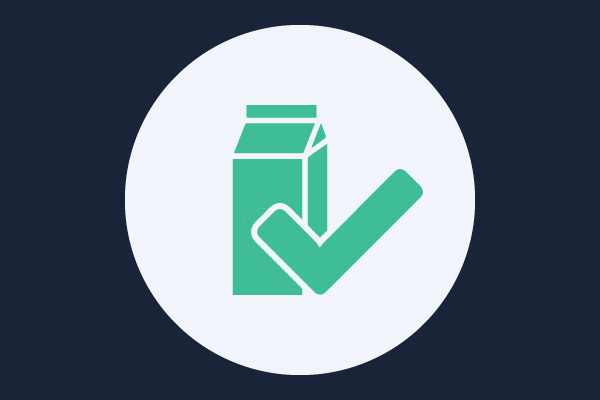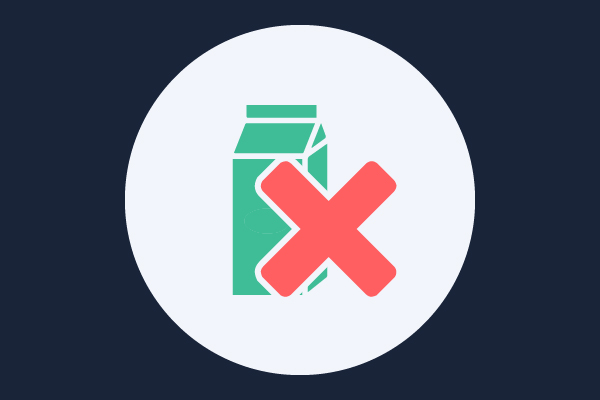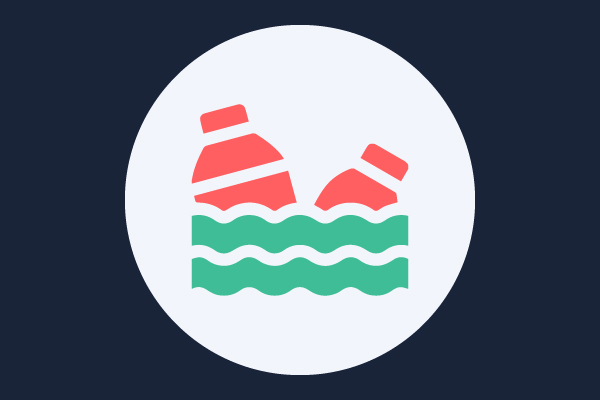How effective Food Packaging Design sells your Product
In general, marketers pay little attention to packaging design and vastly underestimate its impact.
However, optimized package redesigns have been shown to generate an average 5.5% increase in forecasted sales revenue over existing designs.
By appreciating the value of great package design, you can drive trial and build brand equity.
Contents
CHAPTER 1:
Food Packaging
Food packaging is more than just a pretty container for food items.
It’s a story. It’s an experience. It’s a feeling.
Let’s dive in.
What is Food Packaging?
The primary function of food packaging is to protect food products.
Three functions should be addressed in food product packaging design:
- Food protection: keep food safe during transportation, handling, and distribution
- Food safety: eliminate or reduce food recalls and hazards
Food freshness: maintain the appearance, taste, shelf life, and quality
What is Food Packaging Design?
Effective food packaging design goes even further.
It’s two primary goals are:
- making lives of customers easier and
- attracting customers.
Product packaging may seduce but may not fool consumers.
How can you prepare to design food packaging effectively?
You can prepare to design food packaging effectively by having a clear understanding of your brand and its branding.
That includes Brand Identity, and especially Brand Design.
Brand Identity reveals your desired
- Brand message,
- Brand story,
- Brand values, and
- Brand purpose.
The Brand Design defines suitable
- colors,
- shapes,
- typography,
- sizes, and
- materials.
It’s probably a no-brainer that packaging should also contain Brand Name and Logo.
CHAPTER 2:
Customers
Is the design of packaging truly so relevant?
After all, consumers often make subconscious decisions when buying food.
Without further ado, let’s find out.
How much attention do consumers pay to food packaging?
Consumers make the majority of all purchase decisions from the gut.
Depending on the level of consumer involvement in your industry, that number can be up to 95 percent!
Consumers buy everyday products like yogurt in no time at all:
- go to the shelf,
- orientate,
- decide,
- put it in the shopping cart,
- done.
Occasions, where consumers pay much attention to packaging and labels, are rare.
Most of the time, they check to see if there’s any special offer.
At the point of sale, it’s all about safe and quick Brand Recognition (there are exclusions).
What makes consumers choose a product?
Consumers like to buy products from brands they already know because it gives them a sense of familiarity, security, and superiority.
If consumers weighed up all the advantages and disadvantages upon each other in every decision, they would be overwhelmed.
Therefore they buy products that they know, that they like and that convince them in quality and price.
How do consumers benefit from effective packaging design?
Good and identifiable food packaging makes consumers’ lives easier.
It allows quick orientation in front of the shelf of the store (retail) or an online shop (e-commerce).
CHAPTER 3:
3 Do’s in Food Packaging
The packaging is always the first point of contact with your product.
That’s why packaging design might be more than you might have thought.
In terms of strategy, here are three things you should consider concerning your packaging design.
1. Integrate Packaging into your Marketing Mix
Advertising comes in many formats: tv, radio, newspapers, magazines, billboards, social media ads, display ads, video ads, out-of-home ads, product placements – the list goes on and on.
All formats mentioned above are different, but basically, they all function in the same way: you pay someone money, to get the eyeballs of potential customers on your product.
Huh, that’s weird. How come, that many marketers don’t view packaging as being part of advertising?
After all, food packaging is physically right in front of potential customers.
That’s why you should view it as part of your marketing mix.
Also, once you’ve got your product on the store shelf, you don’t need to pay for each person looking at your packaging. It’s free!
2. Drive Brand Awareness with Bold Design
The more concise and unusual the design, the higher the chance of a product landing in the shopping cart.
While concise and unusual doesn’t mean that you should use a color palette of a million colors.
Concise and unusual can also mean to convince consumers with a minimalist design, drastic reduction or an innovative packaging concept.
3. Have the Quality of packaging match your product
The quality of the packaging should match the quality of the product.
It doesn’t do your business any good to sell:
- high-quality products with inadequate packaging or
- crappy products with premium packaging.
If your product and packaging don’t match, it will just confuse customers.
The same applies to other elements of your product:
A recyclable product should also have recyclable packaging.
By having the quality of product and packaging at the same level, your brand benefits from a high level of consistency.
CHAPTER 4:
3 Don’ts in Food Packaging
To avoid lost sales, you can’t afford to make these three mistakes.
While many things can be done correctly in food packaging, there are also things that you can do wrong.
Let’s jump right in.
1. Not verifying your design at Point of Sale
The packaging design looks completely different on the store shelf than on the conference table.
That’s because of lighting and the placement of other brands on the store shelf.
If you don’t verify your design at the point of sale, it may look just like your competitors’ design.
2. Not considering technical printing possibilities
While there are almost unlimited possibilities for packaging eye-catching designs on the computer, modern printing technology and printing techniques have their limits.
It’s essential to verify that a design is feasible.
This should already be considered in the development process.
3. Not staying within the boundaries of your brand
If packaging design is a response to the latest packaging design trends, there is a chance of short-term revenue gains with the certainty of severe long-term damage to the brand.
Brand management is about making sure that a brand stays within its boundaries.
Elements like Brand Strategy, Brand Identity, or Brand Design define what a brand is, and what it is not.
Once a brand crosses its boundaries too often, it loses credibility, and customers won’t recognize it anymore.
For example: In January of 2009, Tropicana underestimated the deep emotional bond consumers had with the original packaging of its orange juice and replaced it with new packaging.
Along with a couple more adjustments, the main difference was changing the image on the packaging.
They replaced the orange and its straw by a big transparent glass full of orange juice.
Consumers immediately started criticizing the new design and sales dropped by 20 percent.
Just one month later, Tropicana had to return to its original packaging.
CHAPTER 5:
Stand out in tough markets
Some markets are particularly competitive.
This is especially true if you are a Small Business or if you are in a saturated market.
In these situations, it is particularly challenging to get consumers to buy your product.
How to stand out as a Small Business?
When launching new products, small businesses generally manufacture smaller quantities as large corporations as Nestle or Pepsico do.
They also have less budget for marketing.
Therefore product design and packaging are two especially important factors for small businesses in launching new products in the food industry.
The packaging is a hugely underestimated medium to advertise.
After all, package design allows potentially reaching 100 percent of in-store buyers.
According to Nielsen’s’ “Breakthrough Innovation Report,” 56 percent of consumers discover new products while shopping in-store.
How to stand out in saturated markets?
In saturated markets, it is essential to believe in the strength of your brand (if you don’t, you should strengthen your brand first, before optimizing your packaging).
It would help if you were bold and independent about your packaging by crossing accustomed patterns.
For example: everyone in your industry could be using packaging with the same color codes and images of the product on it.
Stand out by using different colors, shapes, patterns, and no images of the actual product on the packaging.
Consumers will be more aware of your packaging, and might also be willing to pay a little bit extra.
This is kind of like a Blue Ocean Strategy for Packaging.
CHAPTER 6:
Plastic Packaging Problem
By 2050 there will be more plastic than fish in the ocean.
Today, Shoppers in the US use almost one plastic bag and one water bottle per resident per day!
Single-use plastic is a major environmental concern.
Why does food packaging use so much plastic?
Plastic is versatile, durable, and cheap to produce and had a significant role in our global good health and increased lifespan.
It allows us to:
- protect fresh and processed foods (from contamination, oxidation & microbiological spoilage),
- increase the shelf life of food, and
- transport goods worldwide.
Why is plastic such a big issue?
Many plastic packaging is being used just once, and then pollutes the environment for centuries to come.
That’s because plastic doesn’t decompose.
It breaks down into microplastics, which will remain in our food chain for the next couple of hundred years.
What to use instead of plastics?
Right now, the first step should always be to limit plastic-use whenever it is possible.
The next step should be to source for cost-effective recyclable packaging materials.
Keep in mind that most consumers are aware of the world’s environmental problems.
They favor manufacturers who care about reducing their environmental impact (Note: you have to communicate the use of eco-friendly packaging for consumers to include that information in their purchase decision process).
That means that even if adopting more eco-friendly packaging may be a little bit more expensive, chances are that consumers will reward you by buying your product.
In recent years there has been great progress in the field of compostable packaging materials (like bioplastics or plant-based packaging materials), so that these will soon be a true alternative.






